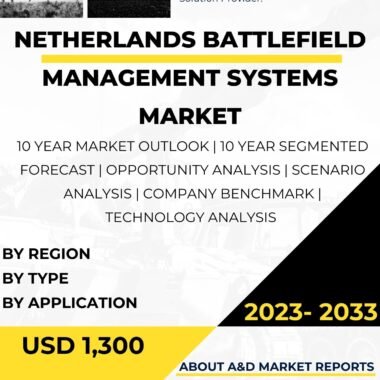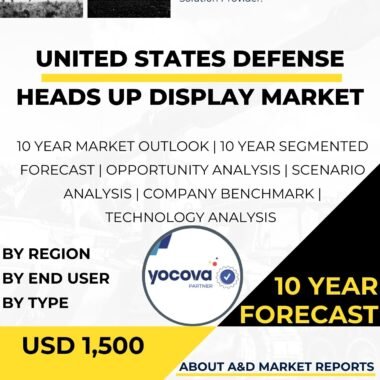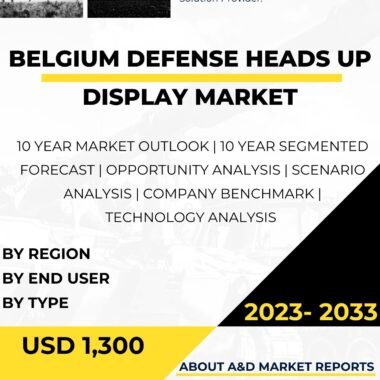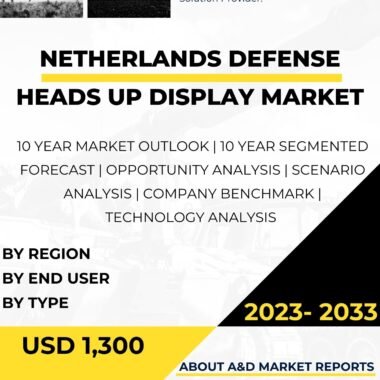Description
The UK defense heads-up display (HUD) market is a critical and rapidly evolving sector that plays a pivotal role in enhancing the country’s military capabilities and situational awareness. HUDs are advanced optical devices that present critical information, such as flight data, targeting information, and sensor data, directly onto a transparent display in the pilot’s or soldier’s line of sight. These sophisticated systems provide essential real-time information without the need for the operator to look away from their primary field of view, enhancing operational efficiency and reducing cognitive workload.
One of the primary areas of focus in the UK defense HUD market is airborne applications. HUDs are commonly used in military aircraft to present crucial flight data, such as airspeed, altitude, heading, and navigation information, directly onto the pilot’s field of view. By providing this critical information in the pilot’s line of sight, HUDs enable them to maintain situational awareness during high-stress flight operations and combat scenarios.
Moreover, the UK defense HUD market addresses the use of HUDs in ground-based military applications. HUDs are increasingly integrated into ground vehicles and soldiers’ equipment to provide them with essential information and targeting data during tactical operations. For soldiers, helmet-mounted HUDs offer a heads-up display of navigation data, mission data, and situational awareness, enhancing their ability to navigate, communicate, and make informed decisions in complex and dynamic environments.
Furthermore, the defense HUD market in the UK encompasses the use of augmented reality (AR) HUDs. AR HUDs overlay digital information onto the real-world environment, allowing users to see both real and virtual elements simultaneously. These advanced HUDs offer unique advantages, such as displaying terrain maps, threat indicators, and other critical data within the actual surroundings, further improving situational awareness and decision-making.
The integration of HUDs into the UK’s defense market has also been driven by the need for enhanced targeting and precision engagement. HUDs can display targeting data, weapon system information, and sensor data directly onto the operator’s field of view, allowing for quicker and more accurate target acquisition and engagement.
Additionally, the defense HUD market in the UK addresses the need for integration with other systems and platforms. HUDs are often connected to a wide range of sensors, avionics, and command and control systems, enabling seamless data sharing and coordinated actions during military operations.
The UK defense HUD market is characterized by continuous innovation and advancements in technology. Researchers and developers are continually enhancing the performance, display capabilities, and processing speed of HUDs, expanding their range of applications and effectiveness in various military scenarios.
Moreover, the defense HUD market in the UK is influenced by the importance of ergonomics and human factors. Ensuring that HUDs are user-friendly, intuitive, and optimized for human-computer interaction is crucial for their successful adoption and use in high-stress and demanding operational environments.
The defense HUD market in the UK faces several challenges. One significant concern is the need for continuous investment in research and development to stay at the forefront of technological advancements. As HUD technology evolves, the UK must remain innovative to maintain a competitive edge and leverage the full potential of HUDs to enhance its military capabilities.
Additionally, the defense HUD market must address the challenge of balancing information overload. Providing too much information on the HUD display can overwhelm the operator and negatively impact decision-making. Striking the right balance and prioritizing critical information is essential for optimizing HUD effectiveness.
Moreover, the deployment of HUDs requires proper training and skill development for operators. Understanding the HUD’s capabilities, its limitations, and effective usage during different operational scenarios are essential for maximizing its benefits.
In conclusion, the United Kingdom’s defense HUD market is a critical and dynamic sector that offers a wide range of capabilities to enhance the country’s military capabilities and situational awareness. HUDs, including those used in airborne applications, ground-based military operations, and augmented reality systems, provide significant advantages in improving operational efficiency and decision-making. Continuous research, development, and innovation are vital to address challenges and harness the full potential of HUDs to support and strengthen the UK’s defense capabilities in the future.




